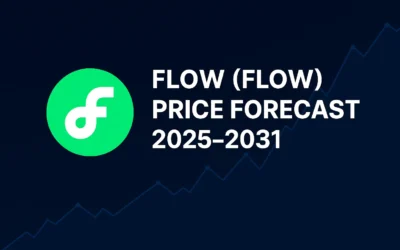Introduction
Welcome to our in-depth guide focusing on growth investing. If you’re interested in rapid revenue and earnings growth, then you’re in the right place. We’ll cover everything from valuation methodologies and key investment strategies to practical examples and case studies, providing you with a comprehensive understanding of how growth investors operate and succeed.
For those interested in value investing, check out our detailed article here. If you’re intrigued by a balanced approach combining growth and value, explore our article on GARP investors here.
This guide is specifically tailored to provide insights into growth investing.
Definition and Characteristics
Growth investors focus on purchasing stocks of companies experiencing rapid revenue growth, even if these stocks are expensive. These companies prioritize rapid revenue expansion over immediate profitability.
Preferred Valuation Methodologies
Growth investors use specific valuation methodologies to identify potential investments. They frequently use the Price-to-Earnings (P/E) ratio but favor companies with high P/E ratios growing quickly. The PEG ratio, which divides the P/E ratio by the earnings growth rate, is another favored tool for identifying rapidly growing companies with reasonable P/E ratios. Additionally, the Price-to-Revenue (or Price-to-sales) ratio is preferred, especially for companies not yet profitable but rapidly increasing their revenues.
Examples and Transition
Amazon and Tesla serve as typical examples of growth stocks. These companies focus on rapid expansion and reinvestment of profits to accelerate growth. Over time, growth stocks can transition into value stocks as their growth rates slow. Microsoft, for instance, started as a growth stock before becoming a value stock when its growth decelerated.
Attitude Towards Profitability
Growth investors do not expect immediate profitability. Instead, they prefer that companies reinvest their profits to accelerate future growth, focusing on the potential for long-term gains.
Comparison with Value Investors
Unlike value investors, who prefer inexpensive stocks with slow growth, growth investors seek expensive stocks with high growth potential. They tend to use valuation metrics like the PEG and Price-to-Revenue ratios and show less interest in the Discounted Cash Flow (DCF) methodology, which is more aligned with the preferences of value investors. On the other hand, Growth investors often use tools like Excel to analyze market data, such as calculating and visualizing P/E ratios over different periods to identify trends and opportunities.
Key Aspects of Growth Investing
Medium to Long-Term Investment (3-30 years)
Growth investors often hold investments until companies realize their full potential, believing future earnings will justify the high prices paid today. They prioritize companies that aggressively reinvest in expansion, whether through new product lines, geographical markets, or technological advancements.
Volatility
Growth stocks can be more volatile than value stocks due to high market expectations and fluctuations in growth prospects. This volatility arises from the market’s reaction to quarterly results and growth forecasts (Nvidia, for example).
Technology and Innovation
The technology and innovation sectors are often favored by growth investors because these areas typically offer opportunities for rapid growth. Companies in these sectors, like Amazon, Tesla, and formerly Microsoft, are often cited as successful examples for growth investors.
Revenue Analysis
Growth investors pay close attention to revenue growth rates and future sales forecasts. They react quickly to financial results and growth projections, making the rapid communication of these results crucial for sell-side analysts.
Practical Examples and Case Studies
Hypothetical Acquisition: Google and Peloton
When Google acquired Peloton, the potential for increased revenue through integration with Google’s existing health initiatives and wearable technology was significant. Google could leverage its extensive data analytics capabilities and distribution channels to enhance Peloton’s product offerings. The acquisition allowed for cost optimizations by integrating Peloton’s operations into Google’s infrastructure. The combined EBITDA margins showed considerable improvement, indicating a strategic and creative acquisition that capitalized on synergies between the two companies.
Sector Analysis
Filtering data for specific sectors, like tech or healthcare, and using pivot tables to analyze subsectors helps investors identify growth opportunities. Plugins like Stock Connector on Excel can provide real-time data, aiding in the analysis of sectors within the S&P 500 and determining high-growth technology companies. For deeper and more exclusive insights, platforms like Yahoo Finance, Finviz link, and particularly GuruFocus link are invaluable. GuruFocus stands out for its quality, depth, and exclusivity of information, making it a highly recommended resource for growth investors.
Total Addressable Market (TAM)
Evaluating the total addressable market helps determine the future growth potential of a company. This approach is crucial for growth investors to understand the broader market context and potential reach of their investments.
For example, consider a company in the EdTech sector, such as Coursera, which offers online courses and degrees. Growth investors would start by estimating the TAM for Coursera by looking at the global education technology market. According to recent reports, the global EdTech market is projected to reach $404 billion by 2025.
Next, investors would consider Coursera’s specific segment within this market, such as online higher education and professional certification courses, which could represent around $120 billion of the total market.
Investors would then assess Coursera’s potential market share. If Coursera aims to capture 10% of this $120 billion segment, their potential revenue could be $12 billion annually. By evaluating how Coursera’s current growth rate, competitive advantages, and market trends align with this potential, investors can better understand the company’s future growth prospects and make more informed investment decisions.
Evaluating Success
Long-Term Perspective
Growth investors maintain long-term positions, betting on sustained growth. For example, Sutter Hill’s investment in NVIDIA or John Doerr’s long-term hold of Amazon shares demonstrates this approach. Patience is key, as growth investors must be willing to wait for companies to reach their potential. However, nothing prevents a growth investor from exiting prematurely to manage risk and protect capital. If a stock experiences a significant speculative rise, revaluation and a strategic exit can be part of a prudent investment strategy to ensure healthy risk management.
Importance of Management Teams
Investment decisions are heavily based on the quality and experience of management teams. Growth investors prefer teams with a proven track record of managing and growing companies, emphasizing the ability of CEOs to sell their vision and motivate their teams. Information about management teams can be found on LinkedIn for free, providing a comprehensive overview of their professional history and achievements. Additionally, GuruFocus offers in-depth analysis and exclusive insights into management quality for a fee, significantly saving time and enhancing decision-making efficiency.
Research and Due Diligence
Thorough due diligence, including detailed reports and consultations with competitors, is essential to identify potential risks and ensure informed investment decisions. Testing the products of the companies they invest in helps growth investors better understand the potential and challenges of these businesses.
Valuation and Methodologies
Valuation Methods
Growth investors primarily use valuation methods such as the Price-to-Earnings (P/E) ratio and Price-to-Revenue ratio. For instance, in valuing a firm for an IPO, combining these methodologies helps average out the valuation and reduce errors. The PEG ratio, which adjusts the P/E ratio by the earnings growth rate, is also crucial in identifying companies that are growing rapidly with reasonable valuations.
Here are specific thresholds for the Price-to-Earnings (P/E) ratio, Price-to-Sales (P/S) ratio, and PEG (Price/Earnings to Growth) ratio:
Price-to-Earnings (P/E) Ratio
- Buy: P/E ratio below 20, particularly for companies with high growth potential. This indicates the stock is relatively undervalued.
- Hold/Neutral: P/E ratio between 20 and 30, suggesting the stock is fairly valued with moderate growth potential.
- Sell: P/E ratio above 30, unless the company demonstrates exceptionally high growth rates that justify a higher multiple.
Price-to-Sales (P/S) Ratio
- Buy: P/S ratio below 3, especially for tech companies or those in high-growth sectors. A lower P/S ratio can indicate undervaluation relative to revenue.
- Hold/Neutral: P/S ratio between 3 and 6, suggesting the stock is reasonably valued with balanced growth prospects.
- Sell: P/S ratio above 6, unless the revenue growth is extremely high and sustainable, which might justify the higher valuation.
PEG Ratio (Price/Earnings to Growth Ratio)
- Buy: PEG ratio below 1, indicating the stock is undervalued relative to its growth rate. This is particularly attractive for growth investors.
- Hold/Neutral: PEG ratio between 1 and 1.5, suggesting the stock is fairly valued in relation to its growth.
- Sell: PEG ratio above 1.5, unless the company has extraordinary growth prospects that can justify a higher valuation.
By using these specific valuation thresholds, growth investors can better determine when to buy, hold, or sell stocks based on their potential for future growth and current market valuations.
Comparative Table of GARP, Growth, and Value Investors
| Criteria | GARP Investors | Growth Investors | Value Investors |
|---|---|---|---|
| Investment Horizon | Medium to long-term (3-10 years) | Long-term (5-10 years) | Long-term (5-10 years or more) |
| Valuation Focus | Balance between growth and value | High growth potential, less focus on current value | Undervalued stocks based on intrinsic value |
| Key Metrics Used | P/E ratio, PEG ratio, P/S ratio, DCF, EBITDA | P/E ratio, PEG ratio, P/S ratio, Revenue Growth | P/E ratio, P/B ratio, DCF, Dividend Yield |
| P/E Ratio Preferences | 10-20 for buying; 20-30 for holding; >30 for selling | <20 for buying; 20-30 for holding; >30 for selling | <15 for buying; 15-25 for holding; >25 for selling |
| PEG Ratio Preferences | <1 for buying; 1-1.5 for holding; >1.5 for selling | <1 for buying; 1-1.5 for holding; >1.5 for selling | Generally not used |
| P/S Ratio Preferences | <3 for buying; 3-6 for holding; >6 for selling | <3 for buying; 3-6 for holding; >6 for selling | Generally not used |
| DCF Usage | Sometimes used, especially for mature growth companies | Rarely used due to long-term uncertainties | Commonly used to determine intrinsic value |
| Primary Goal | Balanced growth at reasonable price | Rapid revenue and earnings growth | Buying undervalued stocks with high intrinsic value |
| Sector Focus | Diverse sectors with both growth and value potential | High-growth sectors like tech and biotech | Stable, often cyclical or defensive sectors |
| Risk Management | Moderate risk with balanced approach | High risk tolerance for high returns | Low risk preference, focusing on undervaluation |
| Dividend Preference | Moderate; dividends are a plus but not essential | Low; prefer reinvestment for growth | High; prefer stocks with strong dividend yields |
| Exit Strategy | Flexible; can exit if speculative increase or revaluation | Exit if growth potential diminishes significantly | Exit if stock becomes overvalued or intrinsic value achieved |
Examples of Notable Investors
- GARP Investors: Peter Lynch (Fidelity Magellan Fund)
- Growth Investors: Bill Miller (Legg Mason), John Doerr (Kleiner Perkins)
- Value Investors: Warren Buffett (Berkshire Hathaway), Benjamin Graham
Conclusion
Growth investors focus on rapid revenue and earnings growth, reacting strongly to market catalysts and sentiment. They prefer high-growth potential companies, using valuation models like the PEG and Price-to-Revenue ratios. Unlike value investors, growth investors are less concerned with immediate profitability and more focused on long-term growth potential. Their success relies on thorough research, understanding of management quality, and patience for long-term investment horizons.
For those interested in delving deeper into the art of finding market gems and mastering the best decision-making processes used by top portfolio managers, I highly recommend this book: The Art of Unearthing Gems in the Stock Market. This resource is perfect for investors of all levels and offers in-depth insights into proven strategies for achieving true success in the stock market. Please note that this is an affiliate link, and I will earn a commission if you purchase the book through it.
If you want to simplify and speed up the construction of your portfolio or benefit from professional trading alerts, we offer several portfolios tailored to your risk profile and investor type. To access them, simply subscribe to one of our plans by clicking here.
You can still receive free analyses and updates. To stay updated with the latest investment strategies and receive free analyses of stocks that have the potential to explode in the coming weeks, months, and years, subscribe to our newsletter. Simply click on the yellow button titled “Join our newsletter” at the top right of the page.









0 Comments